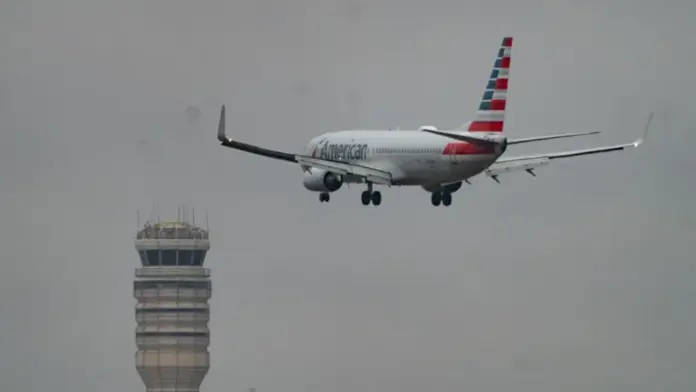In recent weeks, the FAA has been under heavy bombardment by several human rights groups and other interested stakeholders concerning its actions relating to the mass firing of temporary employees. It is an alarming call into question air traffic safety at a time of unprecedented growth for the aviation sector. We will now make clear what this all entailed, including the overarching problems of recruitment facing the FAA.
The Layoffs Explained
In total, hundreds of probationary employees were to be unemployed that weekend, being the latest in a succession of huge cuts the agency had tried and failed to attain for many years. This is part of federal spending cuts to promote efficiency; however, the timing is worrisome, given that it took place days after a mid-air collision killed 67 people.
The FAA has also lost support staff-such as radar mechanics and technicians who were not air traffic controllers. Unions and safety advocates have raised alarms about the removal of this crucial aviation safety support personnel.
Also read : Funeral Home Owner Found Guilty in Cemetery Shooting
Concerns on Air Traffic Safety
With traffic at an all-time high, under some level of strain, the FAA is dealing with those staffing shortages. In all, the reports suggest that Chicago’s center is operating at only 82%. O’Hare is at 78%. What that means, on those days when travelers may be sitting on the tarmac forever, or endless divert/holding delays, is that it very well could be the operating staff that is responsible.
Some of the control towers at O’Hare have not yet properly opened because there is simply not enough staff to work them. This poses great danger, whereby airline industry experts warned passenger safety is seriously at stake. The National Air Traffic Controllers Association is evaluating this issue.
Staff shortages and their impact
The Federal Aviation Agency is, however, being weighed down by the failure in such a massive demand for air travel. Other hostile challenges in the arcane ground of keeping key vacancies filled on behalf of the agency are the recent layoffs. Years and years are in store before a good number of professionals could train a new air traffic controller before the latter could take over some somewhat complicated responsibilities.
“In one shift, an air traffic controller holds the lives of a lot more people in the palm of his hand than a doctor does in all his career.” Such a serious allegation illustrates the screaming need for well-manned control centers.
What happened that led to layoffs?
Just as the reports say, notifications forwarded on a Friday night via email left many staff surprised and unsure. A laid-off employee from the Chicago regional office shared that the termination letter cited performance and probationary status as reasons for the cease-and-desist order, yet many were questioning the criteria they had employed to lay off those employees.
The unions of the flight attendants reacted angrily to the layoffs, and even more, so because they are disappointed with the FAA for not giving enough standing on the decision and justifications for laying off people who held very crucial roles when it comes to air safety. The lack of information and transparency only raises more questions regarding the FAA’s safety mentality.
Larger questions about staffing problems within the FAA
The bigger questions surrounding air traffic control safety within the FAA have long been questions that interested national discussion. Federal officials have pointed out competitive salaries, extremely long work hours, and almost military training someone might undergo in becoming an air traffic controller as an outgrowth. Already, many controllers are working mandatory overtime at the time these layoffs hit them very hard. The recent mid-air collision has raised further questions about the safety mindset held by the FAA.
The Bureaucratic Response to Layoffs
The turmoil erupted with a backlash of much political wrangling. Illinois state Congressmen raised a direct question from this flank. They called the very cuts nonsense because security was compromised. The reorganizing or lay-off process must cease immediately, according to the demands of Congressmen Doug Fetterman, Dennis Kucinich, and James McGee.
The administration’s critics sensed that, apparently hundreds of layoffs could prove to be too severe in threatening air travel safety, all without a definitive plan for overcoming this issue. However, union leaders stressed that safety should take precedence for flight staffing decisions like this one, now that you see how others have played out.
Also read : NAACP Guide: Companies Backing Out of DEI Programs
What’s in Store Ahead?
Yet, while the FAA wades through these waters fraught with troubles, what the future holds in terms of air traffic safety is not that explicitly known. With pressure building from the public, congressional hearings seem a legal certainty, and one is assured that cuts by the administration are headed for the place of grilling scrutiny.
Transportation Secretary Sean Duffy has stated that the FAA accepts this effort to modernize and update the air traffic control system, although the aviation industry has raised concerns about them. It is merely that filling the chairs left vacant becomes a prominent snag for the transition timeline on which the FAA intends to embark.
The recent layoffs at the FAA have ignited the aviation world-elongating into very serious safety dilemmas and having begun to overwhelm agendas with which the agency must reckon on the crowded airspace. It is overwhelmingly likely that, all points equated, proactive advocacy for appropriate resources and adequate staffing should take a back seat to keep a vigilant and hardened eye on enhancing safety measures in air travel as the years roll out.
The stakes are indeed high, and the FAA will have to spare no effort in its future endeavors-perhaps even to theater levels to ensure that air travel remains safe for passengers and commercially viable as well.








